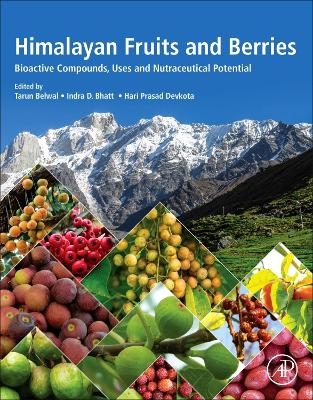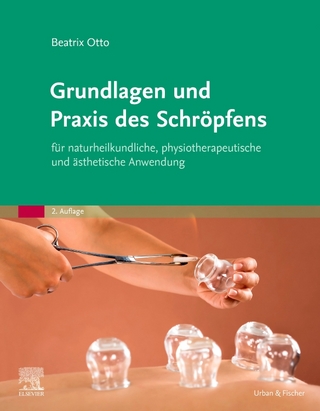
Himalayan Fruits and Berries
Academic Press Inc (Verlag)
978-0-323-85591-4 (ISBN)
Beginning with the introduction of the Himalayan region and its wild fruits, this book explores various kinds of wild fruits and berries. It includes coverage of traditional, ethnomedicinal, and local uses of potential nutraceutical fruits and analyzes their distribution, availability, and cultivation methods. The book also provides a detailed summary of clinical studies and presents "from field to industry" case studies.
Wild fruits and berries play an important role in mitigating hunger in the developing world, and these fruits are consumed either in whole or extracted for use in nutraceutical production.
Nutrition researchers, food scientists, food chemists, plant scientists, pharmacologists, as well as students or researchers working in pharmaceutical and nutraceutical industries exploring the use of Himalayan wild berries and fruits as new components and sources in nutraceuticals will benefit from this book.
Tarun Belwal, MTech., PhD in plant biotechnology has over 10 years of experience in nutraceuticals, food science, bioprocessing, and phytopharmacology. After completing his PhD degree in biotechnology from Kumaun University, Uttarakhand, India, in collaboration with G.B. Pant National Institute of Himalayan Environment (NIHE), Kosi-Katarmal, Almora, Uttarakhand, India, he worked at the College of Biosystems Engineering and Food Science, Zhejiang University, China, and in the Department of Drug Science and Technology, University of Turin, Italy. He has extensively worked in the Indian Himalayan Region (IHR) mainly on wild berries and fruits, biodiversity conservation, and its sustainable use. He was awarded by the “Governor’s Award for Best Research 2016 and 2017 by the Government of Uttarakhand, India, for his work on wild berries. He has been served as guest editor in various leading food journals, namely few as Food Chemistry, Food and Chemical toxicology, Phytomedicine, Sustainable Chemistry and Pharmacy, Foods, and Frontiers in Nutrition. He has published over 100 research articles in peer-reviewed journals and edited 1 book. He is currently engaged in the development and promotion of safer and greener postharvest food bioprocess techniques, food waste utilization, and food functionality. Indra D. Bhatt, MSc, PhD in plant science has over 20 years of research experience in a different position and currently holding Scientist F and Head Centre for Biodiversity Conservation and Management at GBPNIHE, Almora. He has wide experience of working with multidisciplinary, multinational teams of scientists, and currently working as lead author for Cross Chapter paper on "Mountain" and Chapter 5—"Food, fiber, and ecosystem products," IPCC Working Group II—Impacts, adaptation, and vulnerability. He is a member of Commission of Ecosystem Management of IUCN and was elected “Sectional President of Environmental Science Section of the 106th Indian Science Congress 2019. He has published over 160 publications in peer-reviewed journals and as book chapters. His work is largely focused on the conservation and sustainable use of Himalayan biodiversity. Hari Prasad Devkota completed PhD in pharmaceutical sciences from Kumamoto University, Japan, in 2013. Since 2014, he is working as an assistant professor at Kumamoto University. His main research interests are human wellness, plant-based bioactive natural products, functional foods, and ethnopharmacology. Till now, he has authored more than 150 publications including original research articles, review articles, books, and book chapters. He is actively involved in the research on medicinal plants from various countries for their ethnopharmacological surveys, chemical constituents, and pharmacological activities.
1. Introduction to Himalayan region and wild edible diversity
2. Aegle marmelos (L.) Correa
3. Artocarpus lacucha Buch.-Ham
4. Baccaurea ramiflora Lour.
5. Bischofia javanica Blume
6. Karonda Carissa carandas L.
7. Choerospondias axillaris (Roxb.) B.L.Burtt & A.W.Hill
8. Citrus medica L.
9. Crataegus rhipidophylla Gand.
10. Cydonia oblonga Mill
11. Cyphomandra betacea (Cav.) Sendtn
12. Dillenia indica L
13. Diospyros spp.(Diospyros kaki L.f., Diospyros lotus L., Diospyros tomentosa Roxb.)
14. Diploknema butyracea (Roxburgh) H.J.Lam
15. Elaeagnus spp.(Elaeagnus latifolia L., Elaeagnus umbellataThunb.)
16. Entada phaseoloides (Linn.) Merr.
17. Eriolobus indica (Wall.) Decne
18. Ficusspecies (Ficus auriculataLour., Ficus benghalensisL., Ficus caricaL., Ficus religiosaL., Ficus semicordata Buch.Ham.exSm).
19. Fragaria spp. (Fragaria indica, Fragaria nubicola)
20. Garcinia cowa Roxb. ex Choisy
21. Traditional uses,phytochemical and pharmacological properties of Grewia sps(Grewia asiatica and Grewia serrulata)
22. Gynocordia odorata R. Br.
23. Lycium spp. (Lycium barbarum L.,
| Erscheinungsdatum | 25.11.2022 |
|---|---|
| Zusatzinfo | Approx. 200 illustrations; Illustrations |
| Verlagsort | Oxford |
| Sprache | englisch |
| Maße | 216 x 276 mm |
| Gewicht | 450 g |
| Themenwelt | Sachbuch/Ratgeber ► Gesundheit / Leben / Psychologie |
| Technik ► Lebensmitteltechnologie | |
| ISBN-10 | 0-323-85591-1 / 0323855911 |
| ISBN-13 | 978-0-323-85591-4 / 9780323855914 |
| Zustand | Neuware |
| Haben Sie eine Frage zum Produkt? |
aus dem Bereich


